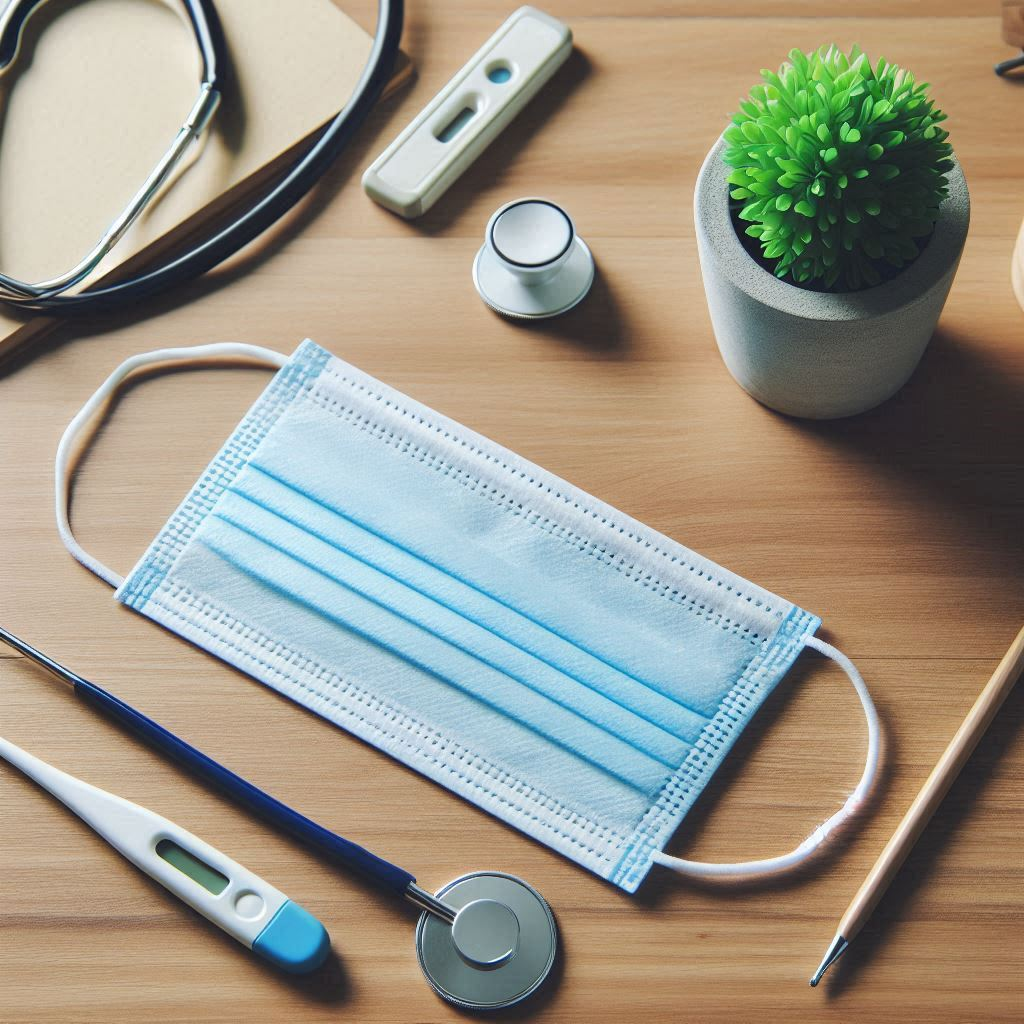What is Surgical mask?

In recent years, Surgical masks have become a staple in our daily lives, serving as crucial tools for health and safety. This comprehensive guide explores the various types of Surgical masks, their benefits, proper usage, and care, providing you with a detailed understanding of their role in personal and public health.
History & Origin
The history of Surgical masks spans various cultures and purposes, evolving significantly over time. Here’s an overview of their development:
Ancient and Traditional Use
- Ancient Egypt and Greece: Masks were used in ceremonial and theatrical contexts. Egyptian funerary masks, like those of Tutankhamun, were made of materials such as gold and were intended to protect the deceased in the afterlife.
- China and Japan: Traditional masks were used in rituals and performances. For example, Noh masks in Japan were used in traditional theater to convey emotions and characters.
Medieval and Renaissance Europe
- Plague Masks: During the Black Death in the 14th century, doctors wore beak-like masks filled with aromatic substances to protect themselves from “miasma” (bad air), which was believed to spread disease.
18th and 19th Centuries
- Medical Masks: The use of masks in medical settings began to evolve. In the late 19th century, masks became more standardized in surgical settings to prevent infection.
20th Century
- Surgical Masks: The modern surgical mask was developed in the early 20th century, with significant advancements during the 1918 influenza pandemic. The mask became a standard part of surgical attire to reduce the risk of infections.
- N95 Respirators: These were developed to provide a higher level of protection, filtering out at least 95% of airborne particles. They became prominent in the late 20th century, especially in industrial and healthcare settings.
21st Century
- COVID-19 Pandemic: The global COVID-19 pandemic in 2020 led to widespread use of face masks for public health purposes. Masks became a symbol of safety and prevention and were integrated into everyday life in many parts of the world.
- Fashion and Culture: The pandemic also influenced the fashion industry, with masks becoming a fashion accessory and a medium for personal expression.
Throughout history, Surgical masks have evolved from ceremonial items to crucial health and safety tools, reflecting changes in medical knowledge, technology, and cultural attitudes.
Types
There are several varieties of Surgical masks, each with a distinct function. The primary categories are broken out as follows:
Medical and Health Masks
Characteristics: Made of clear plastic, covering the entire face from forehead to chin.
Surgical Masks

Purpose: Protect against large droplets and splash. Used primarily in healthcare settings to prevent the spread of infection.
Characteristics: Typically blue or green, with a three-layer structure, including a filter layer.
N95 Respirators
Purpose: Provide a high level of protection by filtering out at least 95% of airborne particles, including viruses and bacteria.
Characteristics: Tight-fitting, with a special filter material. Needs to fit correctly in order to be effective.
KN95 and FFP2 Masks
Purpose: Similar to N95 respirators, these masks offer high filtration efficiency and are used in various regions (KN95 in China, FFP2 in Europe).
Characteristics: Comparable in design and function to N95 masks.
Face Shields
Purpose: Provide a physical barrier to protect the face from droplets and splashes. Often used in conjunction with masks for additional protection.
Proper Usage of Surgical Masks
Proper usage of face masks is crucial for ensuring their effectiveness, whether for health, skincare, or protective purposes. Here’s a guide to using different types of face masks correctly:

Medical and Health Masks
- Surgical Masks
- Before Use: Use soap and water to give your hands a thorough wash.
- Application:
- Make sure the mask completely covers your mouth, chin, and nose.
- The blue or colored side should face outward, while the white side is against your face.
- Secure the mask with the ear loops or ties, making sure it fits snugly.
- During Use: Avoid touching the mask while wearing it. If you need to adjust it, wash your hands before and after.
- After Use: Dispose of the mask properly in a trash bin and wash your hands immediately.
- N95 Respirators (and similar)
- Before Use: Wash your hands and inspect the mask for any damage.
- Application:
- Put the mask on over your mouth and nose.
- Secure the straps or bands behind your head, ensuring a tight seal around the edges.
- Perform a fit check to make sure there are no gaps.
- During Use: Avoid touching the mask. If you need to remove it temporarily, do so carefully and store it in a clean place.
- After Use: Dispose of the mask according to local regulations or re-use if it’s designed for multiple uses, following manufacturer guidelines.
- Face Shields
- Before Use: Clean the face shield with disinfectant if used previously.
- Application:
- Place the shield on your forehead and secure it using the provided band or strap.
- Adjust the shield so it covers your entire face from forehead to chin.
- During Use: Clean the shield regularly and avoid touching it unnecessarily.
- After Use: Clean and disinfect the shield before storing or reusing it.
Benefits of Surgical mask
Medical and Health Masks
- Surgical Masks
- Infection Control: Help reduce the spread of respiratory droplets, minimizing the risk of transmitting infections to others.
- Barrier Protection: Provide a physical barrier against larger droplets and splashes in healthcare settings.
- Comfort: Generally designed for comfort during long procedures or extended wear.
- N95 Respirators
- High Filtration Efficiency: Filter out at least 95% of airborne particles, including viruses and bacteria, providing a high level of protection.
- Reduced Risk of Infection: Offer better protection for healthcare workers and individuals in high-risk environments.
- Seal and Fit: Designed to fit tightly around the face, reducing the risk of airborne contaminants entering through gaps.
- Face Shields
- Additional Protection: Shield the face from droplets and splashes, providing an extra layer of protection when used with masks.
- Ease of Communication: Allow for easier communication and visibility of facial expressions compared to masks alone.
- Reusable: Can be cleaned and reused, making them cost-effective in the long run.
Disadvantages of Surgical mask
- Surgical Masks
- Limited Protection: Do not provide as high a level of protection against smaller airborne particles compared to N95 respirators.
- Disposability: Single-use nature contributes to environmental waste.
- Fit Issues: May not fit snugly on all face shapes, potentially reducing effectiveness.
- N95 Respirators
- Discomfort: Can be uncomfortable to wear for extended periods due to their tight fit and filtration material.
- Breathing Resistance: May cause difficulty in breathing, especially during intense physical activity.
- Cost: Generally more expensive than surgical masks and require proper fit testing for effectiveness.
- Reusability: Many are single-use or have limited reusability, leading to higher costs and environmental impact.
- Face Shields
- Limited Protection: Do not provide the same level of protection as masks against airborne particles; they are primarily a supplementary measure.
- Fogging and Visibility: Can fog up or obstruct peripheral vision, making them less practical in some situations.
- Bulkiness: Can be bulky and less comfortable compared to masks.

Frequently Asked Questions(FAQ’s)
1. What is a surgical mask?
A surgical mask is a disposable face mask designed to protect against large droplets, splashes, and sprays of bodily fluids. It is commonly used in medical settings to prevent the spread of infections and to protect both patients and healthcare professionals.
2. What are surgical masks made of?
Surgical masks are typically made from three layers:
- Outer Layer: Non-woven fabric that repels moisture and droplets.
- Middle Layer: A filter layer that traps bacteria and particles.
- Inner Layer: A soft, non-woven fabric that is gentle on the skin and absorbs moisture from breathing.
3. How does a surgical mask work?
Surgical masks work by filtering out large particles and droplets that may carry viruses or bacteria. They create a barrier between the wearer’s mouth and nose and the external environment, reducing the risk of spreading or receiving infectious agents.
4. When should I wear a surgical mask?
Surgical masks should be worn in medical settings (e.g., hospitals, clinics) during surgical procedures, when caring for patients with respiratory infections, or in situations where there is a risk of exposure to bodily fluids. They are also used in public settings to reduce the spread of respiratory infections.
5. How do I put on a surgical mask correctly?
- Wash Your Hands: Clean your hands with soap and water or hand sanitizer.
- Position the Mask: Place the mask over your nose and mouth. The colored side should face outward.
- Secure the Mask: Use the ear loops or ties to secure the mask in place.
- Adjust for Fit: Mould the metal strip (if present) to fit the bridge of your nose and ensure a snug fit under your chin.
6. How do I remove a surgical mask properly?
- Wash Your Hands: Clean your hands before touching the mask.
- Remove the Mask: Handle the mask by the ear loops or ties, avoiding contact with the front of the mask.
- Dispose of the Mask: Place the mask in a proper waste bin. Do not reuse it.
- Wash Your Hands: Clean your hands immediately after disposing of the mask.
7. Can surgical masks be reused?
No, surgical masks are intended for single use only. Reusing a surgical mask can compromise its effectiveness and increase the risk of infection. Dispose of the mask after each use and replace it with a new one.
8. How long can I wear a surgical mask?
A surgical mask should be worn for the duration of its intended use. If it becomes damp, soiled, or damaged, replace it immediately. For continuous tasks or long procedures, use a new mask as needed.
9. What should I do if my surgical mask becomes wet or soiled?
Replace the mask immediately if it becomes wet or soiled. A mask that is wet or dirty is less effective at filtering and can lead to skin irritation.
10. How should I store surgical masks?
Store surgical masks in a clean, dry place away from direct sunlight and contamination. Masks should be kept in their packaging until use to maintain cleanliness.
11. Are surgical masks effective against all types of infections?
Surgical masks are effective at reducing the spread of respiratory droplets and large particles but are not designed to protect against all types of infections, particularly those transmitted through smaller airborne particles. For higher protection, N95 respirators or similar masks are used.
12. Can I use a surgical mask for protection in everyday settings?
Surgical masks can be used in everyday settings to reduce the spread of respiratory infections, especially during outbreaks or in crowded areas. However, they are primarily designed for medical environments, and other types of masks may offer different benefits for everyday use.
13. Are there any side effects of wearing a surgical mask?
Common side effects include discomfort, difficulty breathing, and skin irritation. If you experience significant discomfort, difficulty breathing, or skin issues, remove the mask and consult a healthcare professional. For individuals with respiratory conditions, it’s important to seek advice from a healthcare provider on mask use.
14. How do surgical masks compare to other types of masks?
Surgical masks provide a moderate level of protection by filtering out large droplets and particles. N95 respirators offer a higher level of filtration and a better fit for protection against smaller airborne particles. Cloth masks are often used for everyday protection but generally offer less filtration compared to surgical masks.
Conclusion
Clinical face masks are more than just a preventive measure; they are a critical component of our collective efforts to safeguard health and well-being. Understanding the types of masks, their benefits, proper usage, and care is essential for making informed choices and contributing to public health. As we navigate the evolving landscape of health and safety, face masks will remain a vital tool in our collective arsenal against infectious diseases and environmental hazards.
Table of Contents
Read more about Surgical mask
Go and visit dusearchit.in and get more knowledge about others topics.
